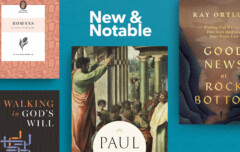We are at an interesting point in history. I guess there’s never really a boring point in history, but there are definitely times when things advance or unravel in a hurry. And today we are seeing the full-out charge of a new kind of morality. We see it playing out in the media just about every day, and Nancy Pearcey’s book Total Truth is still one of the most helpful guides to understanding what is happening around us.
Our society insists that there needs to be a radical split between two different spheres: the private and the public. In the public sphere we have society’s great institutions: the state, academia, multinational corporations, the mainstream media, and the like. In the private sphere we have the family, the church, and personal relationships. We are told that these public institutions are based only on what is scientific and objective. Meanwhile, the private sphere is composed of all those things that are subjective or based on personal values; we are allowed to have them, but they are less important than the public sphere and must never be allowed to influence it.
Here is how this dichotomy looks when diagrammed:
PRIVATE SPHERE
Personal Preference
––––––––––––––––––––––––––––PUBLIC SPHERE
Scientific Knowledge
In the private sphere are matters of personal preference, while in the public sphere are matters of objective truth. What is true for all people is on the bottom level, but what is true for you or me is on the top level. Both exist, but they must be kept apart. Pearcey says, “Religion is not considered an objective truth to which we must submit, but only a matter of personal taste which we choose.” For this reason the split is also sometimes called the fact/value split.
VALUES
Individual Choice
––––––––––––––––––––––––––––FACTS
Binding on Everyone
In the upper level is values—individual preferences—, while on the bottom level are facts which are binding on everyone. Facts represent knowledge drawn from and proven by science, which means they are objective and rational and binding on each of us. On the other hand, the top level values are considered subjective. Because they are a product of tradition and are essentially irrational, they have little to say about reality and cannot be binding on anyone’s conscience except my own.
According to this line of thinking, my Christian morality falls into the values sphere, and is allowed to have no bearing on the facts. While I may bind myself by what my religion teaches, I have no right to demand that anyone else hold to those same values, and no right to allow my values to influence the facts. I am required to hold these two spheres completely apart from one another.
Ultimately, these two spheres represent two tiers or two stories of truth that display a divide between what is rational and verifiable (and, therefore, superior) and what is nonrational and nonverifiable (and, therefore, inferior).
UPPER STORY
Nonrational, Noncognitive
––––––––––––––––––––––––––––LOWER STORY
Rational, Verifiable
On the upper story is what is true for me, while on the lower story is what is true for all of us.
Now why does all of this matter? Because it is “the simple most potent weapon for delegitimizing the biblical perspective in the public square today. Here’s how it works: Most secularists are too politically savvy to attack religion directly or to debunk it as false. So what do they do? They consign religion to the value sphere—which takes it out of the realm of true and false altogether. Secularists can then assure us that of course they “respect” religion, while at the same time denying that it has any relevance to the public realm.”
And this is exactly what is happening today in so many different areas. Christians are allowed to hold to their beliefs, but not when those beliefs begin to creep from the realm of private to the realm of public. A Canadian politician came under extreme pressure when he stated his skepticism about Darwinian evolution. Because his Christian faith is considered a value, he has no right to state it and no right to allow it to influence his public life. An American florist determined that she could not support a homosexual wedding by providing flowers. Because her view of homosexuality stems from the private sphere, she has no right to allow it to influence her business decisions. A media uproar immediately followed. We could look to today’s headlines and instantly find another ten or twenty similar stories.
Listen to what Pearcey says: “This same division also explains why Christians have such difficulty communicating in the public arena. It’s crucial for us to realize that nonbelievers are constantly filtering what we say through a mental fact/value grid. For example, when we state a position on an issue like abortion or bioethics or homosexuality, we intend to assert an objective moral truth important to the health of society—but they think we’re merely expressing our subjective bias.” When we see design in the universe, we are making a testable and verifiable claim, but they hear only religious irrationality. When we say that homosexual marriage is against God’s design, they see irrational personal preference creeping into the public discussion. As Pearcey says, “The fact/value grid instantly dissolves away the objective content of anything we say…”
What do we do about it? Well, whatever else we do, we first need to ensure we do not allow such a divide in our own lives. “We have to reject the division of life into a sacred realm limited to things like worship and personal morality, over against a secular realm that includes science, politics, economics, and the rest of the public arena.” We have to understand that the Bible describes a way of looking at the world that is perfectly unified, where both facts and values flow from the same Source and achieve the same great end. Today more than ever, we must be people who know and love and live the Word of God. And then we must be prepared to stand on, and suffer for, what we know is true.










